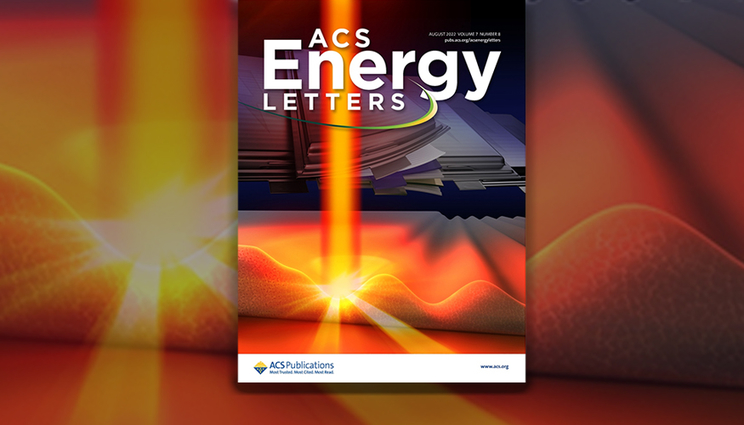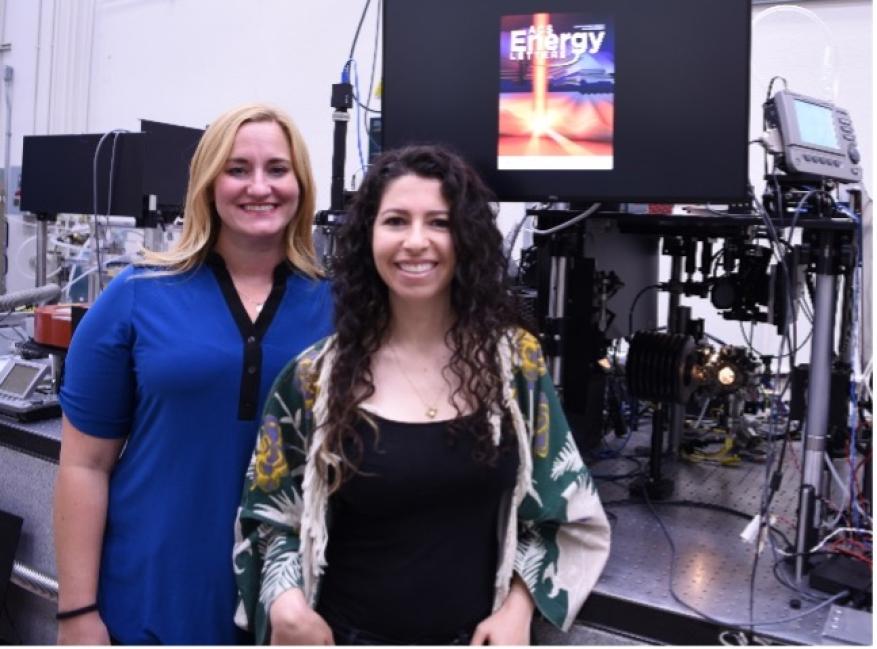New method sheds light on solid-state battery fabrication
 (Download Image)
(Download Image)
Dense, clean, thin and crack-free garnet-type solid state electrolyte film was obtained by CO2 laser sintering with the assistance of heating stage. The unique anisotropic shrinkage, wave-like surface topology and rapid densification behaviors show great potentials of laser sintering to overcome the long-standing processing challenges of solid-state batteries. Image by Eric Brian Smith/LLNL.
Safe, long-cycle-life batteries with high energy density are greatly needed with the rapid growth of electric devices and vehicles and grid energy storage demands.
Lawrence Livermore National Laboratory (LLNL) scientists have devised a method for the fabrication of all-solid-state lithium metal batteries, which have been recognized as the future choice of safe and high-energy-density power sources.
The team found that sintering (compacting and forming a solid mass of material by heat or pressure without melting it to the point of liquefaction) the solid-state electrolyte films with carbon dioxide (CO2) overcomes the common manufacturing challenges in solid-state batteries.
The laser sintering technique yields scalable, low-cost, high-energy-density solid-state lithium (Li) batteries that can advance energy storage needs across national security missions. These laser-based techniques also can be applied to other fields, such as additive manufacturing of polymers, ceramics and metals.
Typical Li-ion batteries (LIBs) use organic liquid electrolytes and graphite anodes, which lead to safety hazards and lower the energy density. Among the various substitutes, all-solid-state Li-metal batteries — with the integration of solid-state electrolytes (SSEs) — are foreseen as the next generation of energy-storage devices that not only effectively address battery safety concerns, but also enable the utilization of Li metal anodes and high-capacity/high-voltage cathode materials to achieve higher energy density.
“This work provides a unique, scalable and widely applicable ultrarapid laser sintering technique to overcome the difficulties associated with classic methods for the integration of SSEs for practical solid-state Li-metal battery applications," said LLNL materials scientist Jianchao Ye, corresponding author of a paper appearing on the cover of ACS Energy Letters.
Erika Ramos (right) and Allison Browar (left) in front of the CO2 laser sintering system.
“The processing of garnet-type solid-state electrolytes remains challenging, as making them denser conventionally requires high sintering temperatures and long processing times, which can result in severe Li loss, the formation of secondary phases and a high porosity and low ionic conductivity," said Erika Ramos, a LLNL postdoctoral researcher who is experienced in battery chemistry and crystallography and was first author of the paper.
To address the processing challenges of SSEs, one of the key LLNL team members, Allison Browar, set up a unique CO2 laser sintering system with stage heating capability. The team used the system and successfully demonstrated the rapid densification of low-packing-density Li6.4La3Zr1.4Ta0.6O12 (LLZTO) films.
Unlike conventional furnace sintering or recently developed spark plasma sintering, hot pressing and rapid joule heating, the new laser sintering approach possesses at least three distinct characteristics: mitigation of Li loss through ultrafast sintering; a unique anisotropic shrinkage behavior that greatly reduces film thickness; and wave-like surface topology from a point scanning strategy that enables 3D interfacial contacts with electrode materials.
“Together with unprecedented microstructural controllability, laser sintering provides new opportunities to realize the promises of superionic conductors in solid-state battery applications," Ye said.
LLNL scientist John Roehling also contributed to this work, which was funded by LLNL’s Laboratory Directed Research and Development program.
Contact
 Anne M. Stark
Anne M. Stark
[email protected]
(925) 422-9799
Related Links
ACS Energy LettersLLNL’s Laboratory Directed Research and Development
Tags
Advanced Materials and ManufacturingMaterials Science
Physical and Life Sciences
Energy
Science
Featured Articles








